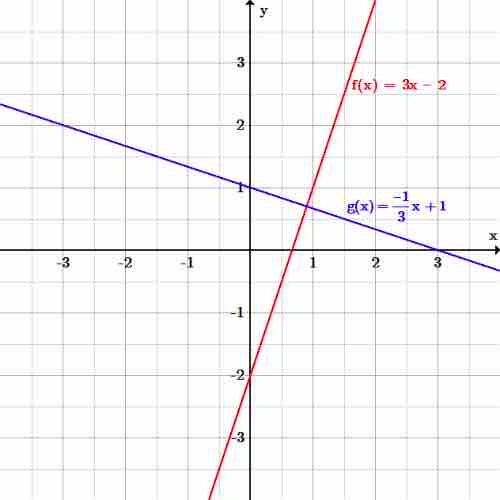Parallel Lines
Two lines in a plane that do not intersect or touch at a point are called parallel lines. The parallel symbol is
For example, given two lines:
Given two parallel lines
- Every point on
$f(x)$ is located at exactly the same minimum distance from$g(x)$ . - Line
$f(x)$ is on the same plane as$g(x)$ but does not intersect$g(x)$ , even assuming that the two lines extend to infinity in either direction.
Recall that the slope-intercept form of an equation is:
For example, in the graph below,

Parallel lines
Perpendicular Lines
Two lines are perpendicular to each other if they form congruent adjacent angles. In other words, they are perpendicular if the angles at their intersection are right angles,
For example given two lines,
For two lines in a 2D plane to be perpendicular, their slopes must be negative reciprocals of one another, or the product of their slopes must equal
Given two lines:

Perpendicular lines
The line
Writing Equations of Parallel and Perpendicular Lines
Example: Write an equation of the line (in slope-intercept form) that is parallel to the line $y=-2x+4$ and passes through the point $(-1,1)$
Start with the equation for slope-intercept form and then substitute the values for the slope and the point, and solve for
Therefore, the equation of the line has a slope (
Example: Write an equation of the line (in slope-intercept form) that is perpendicular to the line $y=\frac{1}{4}x-3$ and passes through the point $(2,4)$
Again, start with the slope-intercept form and substitute the values, except the value for the slope will be the negative reciprocal. The negative reciprocal of
Therefore, the equation of the line perpendicular to the given line has a slope of